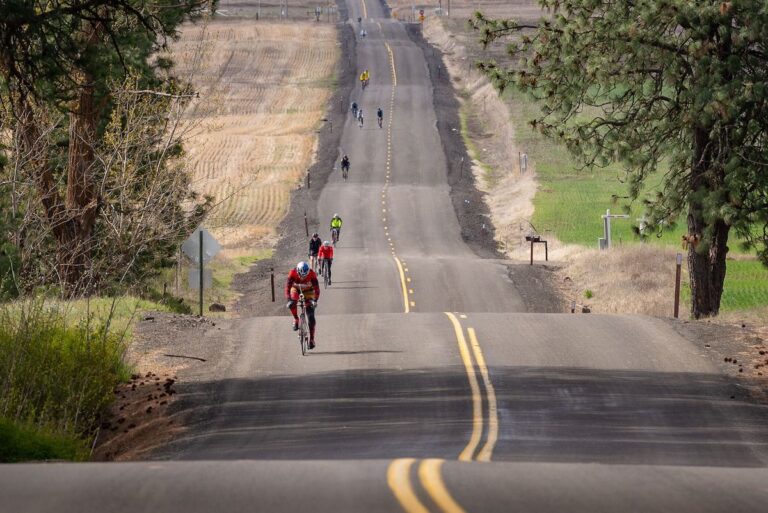Density can be a hard sell. Congestion, hardscape and pollution come to mind when most people think about highly populated urban environments. A lot of people see the single-family residence as a cornerstone of our society. Since WWII our cities, our lot sizes and our homes have been expanding-and, further away from each other.
Right now, Spokane seems to be abuzz about ideas about urban density. The planned University District recently invited Gordon Price (the man who helped make density liveable in Vancouver B.C.) here to speak on these topics. Price believes that communities that fight growth often make many sacrifices for their non-growth ideas and do not fully understand the consequences of their decisions.
“People don’t buy into the simple promise of ‘economic development,” says Price, “instead you have to explicitly show them what they are getting in return for the growth, such as parks, community centers, school sites, childcare centers, non-market housing sites, bikeways, roads, public art and other improvements.”
The City of Spokane has looked hard as to what the acceptable levels of density are in our area. The Comprehensive Plan, adopted in 2001, calls for a concentrated mixture of uses in 19 centers and two corridors throughout the city balanced with the preservation of our existing single-family residential neighborhoods. The city aims to focus growth or density in specific areas that will in turn foster stable development patterns throughout the rest of the city.
Density also affects public transportation, and each citizen’s access to equal mobility throughout a city. Cities with higher densities have much higher use rates of public transit. At the Spokane Transit Authority (STA), ridership is up over 15% from a year ago. STA is encouraging our region to begin to plan for more transit-oriented development. According to studies done for The National Business Coalition for Rapid Transit, a steady stream of pedestrians and transit riders around transit stations encourage the growth of employment opportunities and retail. Transit-oriented development focuses on providing housing, work, and retail locations within 1/4 mile of a transit center.
The design of our cities also affects our energy use and our impact on the environment. A commitment towards stewardship of our shared ecology is rarely a result sprawl development patterns. A study recently published by the National Research Council found that in 28 metropolitan areas, 87 percent of the people are driving cars to work, and that people are taking longer to reach their workplaces. Our dependence on fossil fuels is destroying our health, natural resources and are pocketbooks.
Can density then, be considered sustainable? That is the topic for the next Earth & People Sustainability Forum entitled, “Mixed Land Use, Density and Sustainability” on November 8 at the Community Building. Louis Meuler, City of Spokane, Molly Myers, Spokane Transit Authority, Bob Scarfo, Design Institute and Gavin Cooley, City of Spokane will sit on the panel to discuss this topic. Below is a preview of the topic with three of the four panelists.
Louis Meuler, Planner, City of Spokane
Economy: The Public Planning Perspective
“Mixed-use is integrating all the things of life into a common location or nearby each other so you don’t have so much transportation requirements on a daily basis. That lends itself to less energy and more interaction … and which can help out your economy potentially.”
“The city has tried to encourage transition areas between intensity in the center where we tried to encourage a mixture of uses and blending into existing neighborhoods. When we see those nodes of activity develop, we see increased transit opportunities.”
“We are looking into reintroducing a lot of those types of housing forms that were lost, such as cottage housing, mother-in-law or accessory dwellings or townhouses. We are now starting to see the market respond to this. The public is looking for choices.”
Molly Myers, Communications Manager, Spokane Transit Authority
Equity: The Public Transportation Perspective
“It is only as of late that transit is seeing themselves as an equal partner in the whole mixed-use development type process … up until a few years ago transit really saw itself as following-where the development went, transit went. With the onset of lightrail, they are seeing themselves not only as an equal player but a forerunner [to development].”
“Transportation is critical. People have to have that level of mobility to sustain an existence. With transit we want to have options. The cities that really have flourished in these mixed-use development concepts really expose people to a myriad of different transportation options.”
“Timing is everything. It is better to be proactive than reactive, we have a lot more opporutunity to shape rather than to react. We have an immense amount of opportunity here.”
Bob Scarfo, Professor, WSU Design Institute
Ecology: The Urban Visionary Perspective
“In the context of rising energy prices … To move towards walkability, to have transportation at the table, to have small more complete environments, where you can satisfy your daily needs … is going to contribute to sustainability. Not only in terms of saving energy, but having people crossing each others paths more frequently-you are going to increase the social capital of a community.”
“Instead of sitting behind six other people waiting for a latte, you might be standing next to them and eventually smile and begin talking, because you are right there. As a result community becomes stronger because of conversations that we never held in a suburban parking lot.”
The cost of transportation is going to force people to make some pretty hard decisions. Instead of moving entire suburban populations, people are going to ask for a village center, they are going to start asking for land-use changes. People are going to realize the annual costs of oils, energy and obesity to themselves and to their way of life.












